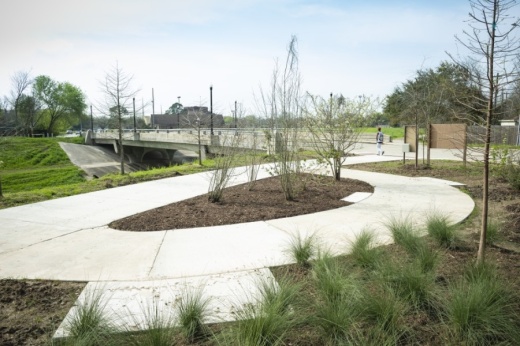Developers who incorporate “green stormwater infrastructure,” such as green roofs, rain gardens, permeable pavement and rainwater harvesting, are now eligible for a new city tax abatement approved by Houston City Council on Dec. 16.
“Green stormwater infrastructure ... allows water to slow down and soak into the soil. Water that is held underground is cleaned of toxic pollutants, recharges our groundwater and can flow over our streets to join a raging flood,” said Anna Farrell-Sherman, a clean water advocate with Environment Texas, during a public hearing on the ordinance.
The ordinance was also supported by the Katy Prairie Conservancy and Bayou City Water Keeper. A report from Environment Texas found that Houston’s previous incentives put it eighth out of 10 cities in Texas seeking to mitigate flooding through green stormwater infrastructure. With the new ordinance in place, the city is tied for third with San Antonio and Austin, Farrell-Sherman said.
District C Council Member Abbie Kamin first introduced the idea as an amendment to the city’s fiscal year 2020-21 budget, which was approved in June.
“This represents a more holistic approach to the issues we’re tackling with climate change, and it includes our private partners,” Kamin said.
Developments or redevelopments that begin with an investment of at least $3 million and that include at least $200,000 dedicated to green stormwater infrastructure can receive a tax abatement for up to 10 years.
The value of the abatement will be calculated based on scoring criteria that consider the environmental impact of the design and the amount invested in the green infrastructure. For example, a $3 million development that includes $200,000 of investment in the highest standard of green stormwater infrastructure outlined in the scoring matrix could have 100% of its green infrastructure investment abated over 10 years, which would save $20,000 per year.
The total tax relief varies depending on the proportion of the project spending allocated to green stormwater infrastructure and the quality of the design, according to the new ordinance.
Along with the new ordinance, City Council also approved an amendment to a city policy that encourages developers to comply with the U.S. Green Building Council’s Leadership in Energy and Environmental Design, or LEED, standards. These standards, which previously did not carry any tax incentives, include energy efficiency and water savings targets and a list of sustainable building materials.
After establishing the policy allowing developers to apply for LEED certification in 2004, the city did not receive any applications from private developers, although some city-owned facilities were built to LEED standards.
Council amended the policy to allow up to 15% in tax abatement for up to 10 years for certain LEED-certified developments.





